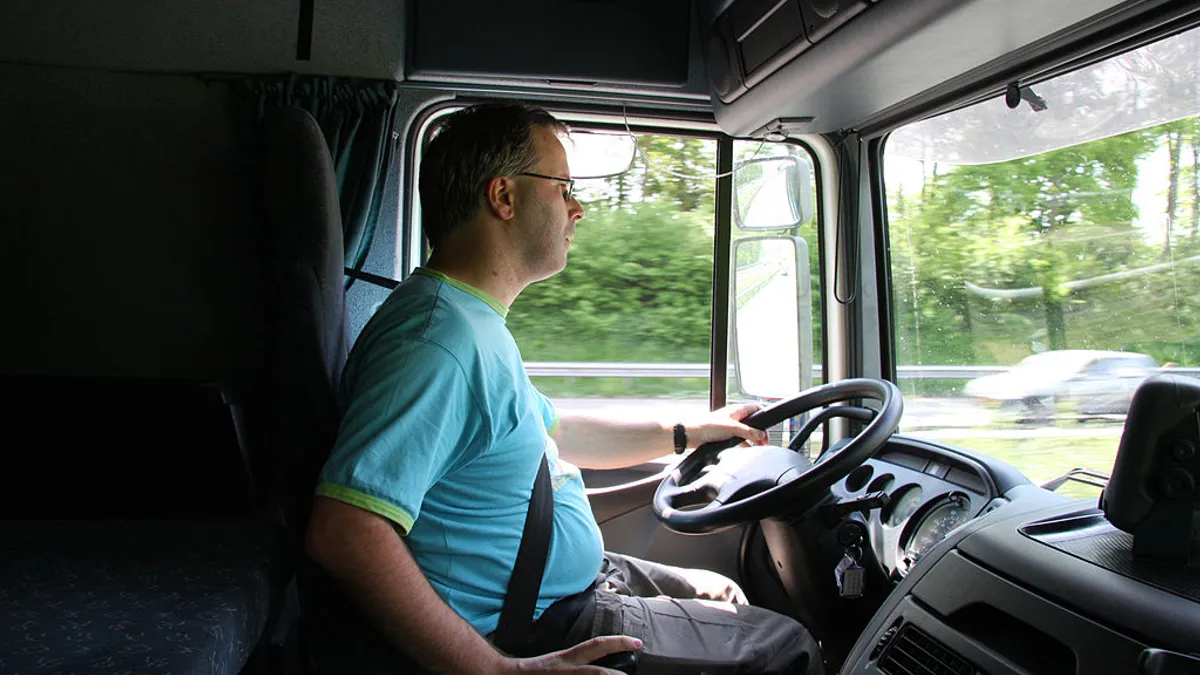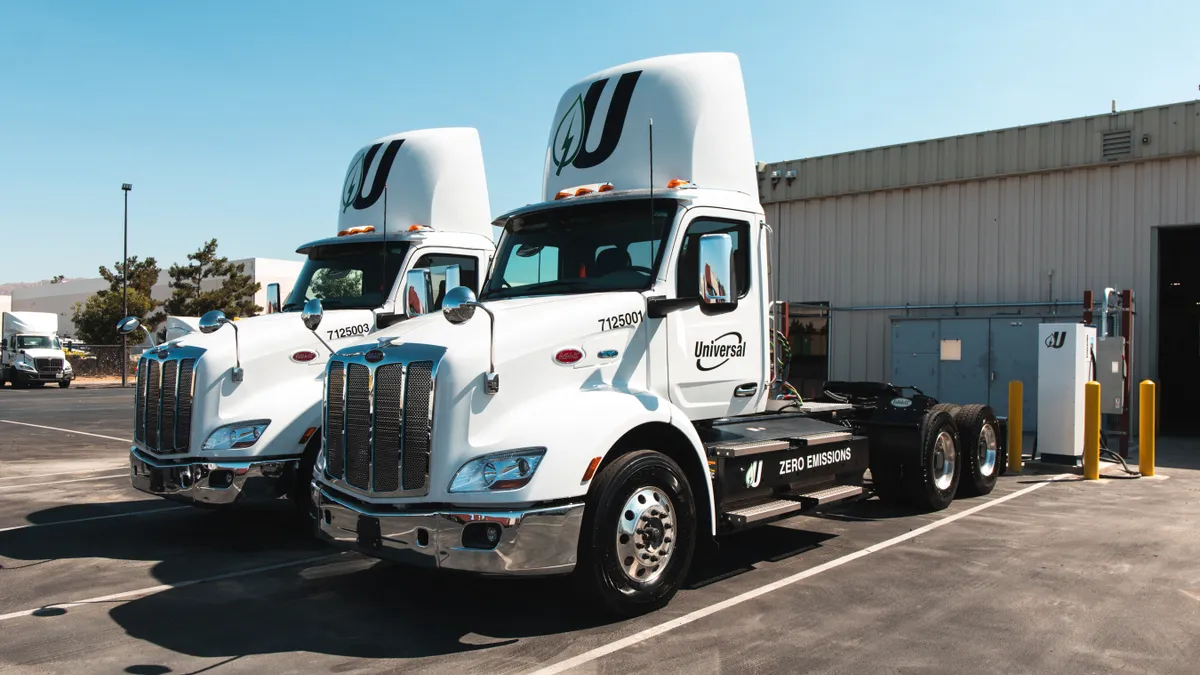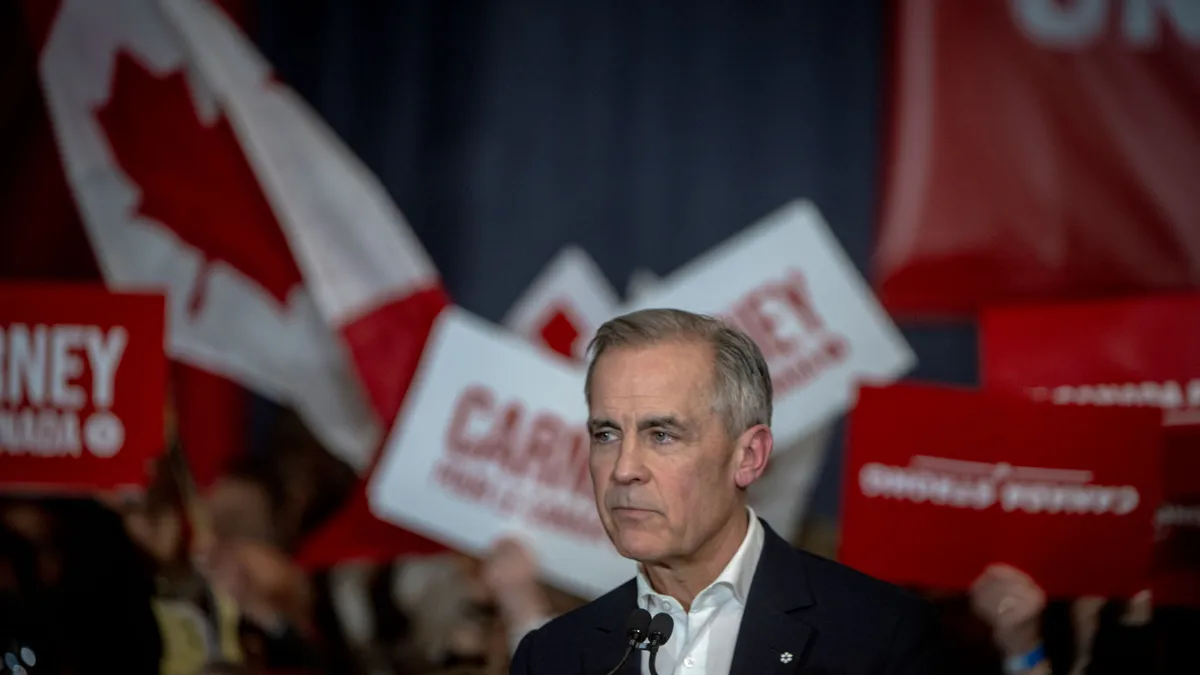When Keith Wilson proposed having an in-cab camera system for the trucks at Sharp Transport, the idea did not go over well with some drivers.
The system raised privacy concerns with drivers, not least of which was the fear that in-cab cameras would record while the truck was parked and the driver was sleeping. A few drivers threatened to quit the fleet if Sharp went ahead and installed the rectangular units, which would produce four different camera angles from the cab.
Wilson, Sharp's director of safety and recruitment, knew he had to address the concerns before he implemented the policy change. After proposing the idea, Sharp contacted the chairman of the driver council the next day, said Wilson. "We met with the [council] a few weeks later to discuss and answer questions."
"We showed them everything the camera did, and everything they did not."

Keith Wilson
Director of Safety and Recruitment at Sharp Transport
The list of concerns soon narrowed, with drivers asking if the cameras would be able to peer into the sleeper areas.
"The biggest objection obviously was the driver-facing cameras," said Wilson. "We showed them everything the camera did, and everything they did not."
One thing the cameras do not do is record when the keys leave the ignitions, Wilson said. The cameras even go inactive if a truck is idle for three minutes. And most important to drivers, the unit did not record the sleeper area, he told drivers.
Out of 150 Sharp Transport drivers, only three left the company after in-cab cameras were installed, Wilson told a WorkHound webinar last summer.
Then the policy paid off. Costs went down, and the cameras "paid for themselves." Wilson said it only took eight months for the return on investment.
For truck drivers, often blamed for accidents, the in-cab video became a useful piece of evidence to show the police. Sometimes truck drivers were exonerated "on the spot" following an accident, after police reviewed the video, Wilson said.
"It changes the narrative really quickly," said Wilson.
The video benefits
Alan Drazen, vice president of Simco Logistics, said its Samsara-branded video cameras have indeed exonerated the company's drivers. But Drazen pointed to other benefits from the cameras, as well.
"The biggest change for us was the culture change," said Drazen.
From safety to "harsh events" such as sudden braking, the cameras have proven their benefit by improving the company's safety record, Drazen said.
The New-Jersey-based company has 160 trucks, Drazen said. The Samsara in-cab cameras have cut use of personal electronic devices by about 90%, he said. The video cameras, which can upload videos immediately after a harsh event is detected, are also used for driver coaching, tips and discipline.

As for privacy concerns, the drivers still have them, even though Simco has no overnight drivers. But Drazen tells the drivers that video is only uploaded to him under certain circumstances.
"If they don't do harsh events, we'll never see [the drivers]," said Drazen.
In three years of usage, Simco's insurance premiums have dropped, Drazen said, as the company's "culture of safety" grows.
"Right now, we are paying about 60% of what we were paying before the cameras," said Drazen. "And [insurance premiums have] been dropping every year."
Drazen said Simco agreed to a five-year prepayment for the Samsara cameras and service. The ROI was quickly recognized.
"We got a full recovery in costs in 18 months," said Drazen. "It's unbelievable."
Drazen said he now promotes the cameras to other fleets.
"It makes it safer for everybody," said Drazen.
Wilson said the time from idea to implementation of in-cab cameras relatively short, and the ROI came quickly.
"The proposal and vetting process took about a month to complete. Two weeks to finalize the financial aspect, a week to have shop personnel trained to install," Wilson said. "We estimated three months to install in all units."
From skepticism to support
The cameras can notify dispatch offices immediately after a harsh event. In Samsara's case, the cameras can upload video immediately via cellular networks.
Samsara is aware of the concerns drivers have at first. The company has a blog that offers nine tips "for getting driver buy-in on dash cams."
As with Sharp Transport, the first strategy advised was meeting with drivers and transparency. And during those meetings, showcase real exoneration footage, the blog states.
"We got a full recovery in costs in 18 months. It's unbelievable."

Alan Drazen
Vice President of Simco Logistics
"Successfully exonerating drivers is the most powerful way to get skeptical drivers in support of dash cams," the blog, written by Samsara product marketing manager Eleanor Horowitz, said. "If you have an example of a near-miss or not-at-fault collision that was captured during a pilot, share the footage with all of your drivers."
Wilson said there is no legal precedent that favors violations of privacy for company-owned vehicles.
"We did have to compromise with our owner-operators," said Wilson. "They agreed to have the cameras installed on all of their vehicles with the option to have the driver-facing camera turned off."

Privacy issues aside, Samsara makes the lure of decreasing accidents and premiums the main selling point in the promotion of the cameras. The company, on its blog, cited a June report by Frost & Sullivan. The report noted the FMCSA estimates that 71% of large-truck crashes occur due to driver distraction.
"Unsafe practices, including texting or calling while driving, increase the likelihood of crashes," the report reads. "They also affect a fleet’s brand image and reputation, while creating challenges related to driver retention."
Frost & Sullivan concludes that the U.S. and United Kingdom market for such cameras will grow by 22.2% from 2018 to 2025, surpassing 3.5 million units by 2025.
Wilson said Sharp's accidents have dropped 125% since cameras were installed, and part of the reason is the psychology involved.
"Just having the camera in-cab changes behavior," said Wilson.




















